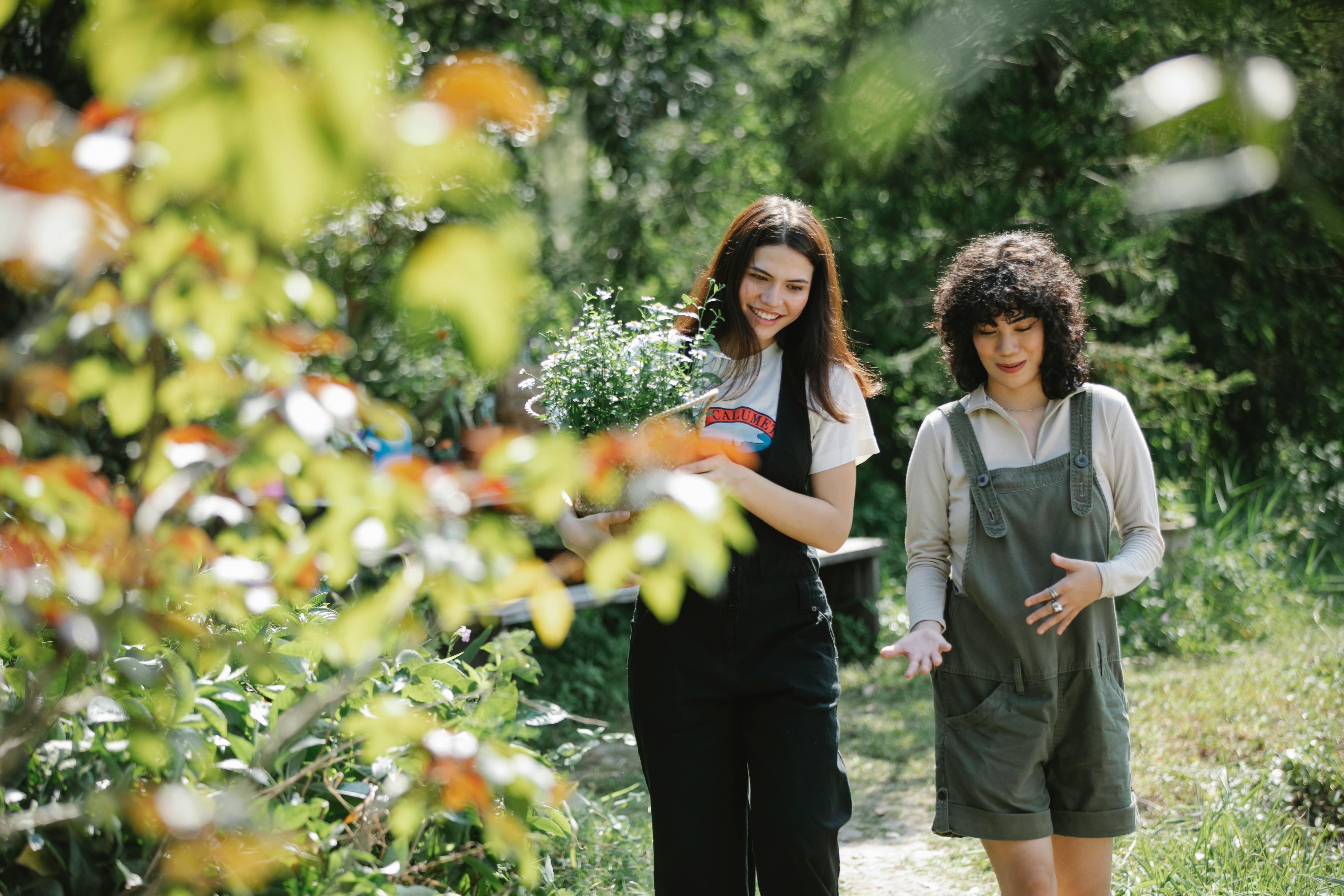When it comes to planting strawberries in Central Texas, timing is essential. The best time to plant strawberries in this region is during the cool season of late fall and early winter. This cooler weather allows the plants to become established without becoming stressed by excessive heat or drought. Additionally, the conditions are ideal for growing healthy, productive plants that provide delicious berries for years to come.The best time of year to plant strawberries in Central Texas is in the fall, typically around late September or early October. This will give the strawberry plants enough time to become established before winter sets in, and will allow them to produce a crop of strawberries for the next season.
Climate Considerations
Strawberries are perennial plants, meaning they will survive in Central Texas for years if properly cared for. However, they do best in a climate with mild winters and warm summers. While the temperatures can vary throughout the year, they should remain relatively consistent during the summer months. Strawberries also require ample sunlight and well-draining soil to grow and thrive. It is important to consider these climatic conditions when selecting a location to plant your strawberries.
Soil Type
The type of soil you choose for your strawberry plants can have a huge impact on their growth and productivity. Sandy loam soils are ideal for growing strawberries in Central Texas because they provide adequate drainage while still retaining some moisture. Soils that are too clay-like or too sandy may not be suitable for long-term success with strawberry cultivation. It is also important to ensure that the soil has adequate nutrients in order for your strawberries to thrive.
Variety Selection
When selecting what variety of strawberry plants to plant in Central Texas, it is important to consider the type of climate you have and what type of yield you would like to achieve. Certain varieties may be more adapted to certain climates than others and may produce more fruit than other varieties in those specific climates as well. Additionally, some varieties may require more maintenance such as pruning or fertilization than other varieties, so it is important to research each variety before planting.
Pest Control
Insects and other pests can wreak havoc on strawberry plants if left unchecked. In order to protect your crop from unwanted pests, it is important to practice good pest control measures such as using insecticidal soaps or oils, encouraging beneficial insects such as ladybugs or praying mantises, and making sure that any diseased or insect-infested plants are removed immediately from the garden bed. Additionally, proper sanitation practices should be used when working around strawberry plants.
Fertilization
Although strawberries are relatively low maintenance crops, they do require some fertilization in order to produce an abundant crop of delicious berries each season. Fertilizers should be applied at least once every two months during the growing season and should be tailored specifically for strawberries based on soil tests results. Over-fertilizing can lead to excessive growth which will decrease yields so it is important not to overdo it when fertilizing your strawberry plants.
Soil Requirements for Growing Strawberries in Central Texas
Growing strawberries in Central Texas requires soil with a pH range of 5.8 to 6.5, good drainage, and adequate fertility. Strawberries require a high level of organic matter and plenty of nitrogen, phosphorus, and potassium. Soil should be well-drained with good aeration to keep the roots from standing in water for long periods of time. Sandy loam soils are best for growing strawberries since they are light and easy to work with. The soil should be amended with organic material such as composted manure or compost prior to planting. Raised beds are an excellent option for strawberry production in Central Texas as they help improve drainage and increase air circulation around the roots.
In addition to soil amendments, fertilizers should also be applied regularly during strawberry season. For optimal growth and production, use a fertilizer with an analysis of 8-12-8 or 10-20-10 before planting and every few weeks during the growing season. Too much nitrogen can cause excessive vegetative growth which will reduce fruit production so it is important to ensure that the proper amount is applied.
Strawberry plants need at least six hours of direct sunlight each day so it is important to choose a site that receives plenty of sun throughout the day. Avoid planting in areas that are prone to flooding or have standing water after rainstorms as this can cause root rot or other plant diseases.
By following these simple guidelines, you can ensure that your strawberries have the best chance of thriving in Central Texas’s warm climate. With proper care, your plants will produce delicious fruit year after year!
Climate Conditions Favorable for Growing Strawberries in Central Texas
Growing strawberries in Central Texas can be a rewarding experience. Strawberries are a popular fruit that is enjoyed by many and can be grown with relative ease. The key to success is to ensure that the climate conditions are favorable for growing strawberries.
The most important factor for growing strawberries in Central Texas is temperature. The ideal temperature range for strawberry plants is between 55°F and 75°F. During the summer months, temperatures can often reach upwards of 90°F, so it is important to choose a spot with adequate shade or provide protective covering for the plants during the hottest part of the day.
Another important factor is moisture. Strawberries need a consistent supply of water throughout their growing season, which usually lasts from April through October in Central Texas. It’s best to water your strawberry plants deeply once or twice per week, depending on how much rain has fallen in your area.
The amount of sun exposure also plays an important role when growing strawberries in Central Texas. Ideally, strawberry plants should get at least six hours of direct sunlight each day during their growing season. If this isn’t possible due to limited space or other factors, then you may need to supplement with artificial lighting such as grow lights or fluorescent bulbs.
By following these guidelines and providing your strawberry plants with the proper amount of sunlight, temperature, and moisture, you can ensure that your strawberries will thrive during their growing season in Central Texas!
Sunlight Requirements for Growing Strawberries in Central Texas
Growing strawberries in Central Texas requires adequate sunlight to ensure a successful harvest. Strawberries require eight hours of direct sunlight per day in order to produce the best yields. They also benefit from an additional four hours of indirect light each day, making a total of twelve hours of light daily. When selecting an area for growing strawberries, look for a spot that is well-drained and receives plenty of sun throughout the day. Avoid areas shaded by trees or buildings as these could interfere with the amount of sunlight that reaches the plants.
It is important to remember that different varieties of strawberries have different requirements for sunlight and temperature. Early varieties such as ‘Chandler’ and ‘Selva’ prefer cooler temperatures and slightly less sun than mid-season varieties like ‘Cavendish’ and ‘Albion’, while late season varieties such as ‘Tristar’ and ‘Sweet Charlie’ require more sun than mid-season varieties. Knowing which variety you are growing will help you locate an area with appropriate sunlight levels for your strawberry plants.
In addition to providing adequate sunlight, it is important to ensure that your strawberry patch receives enough water. Strawberries require about an inch of water per week during the growing season, but this may vary depending on local weather conditions and soil type. If rainfall is not sufficient, supplemental irrigation may be necessary to keep plants healthy and productive. Overwatering can lead to root rot or other diseases, so it is important to adjust your watering schedule accordingly.
When properly cared for, strawberries can provide a delicious addition to your garden in Central Texas. Knowing how much sun your strawberry plants need will help ensure a successful harvest!

Irrigation Needs for Growing Strawberries in Central Texas
Growing strawberries in Central Texas requires adequate irrigation. Strawberries need ample water to produce large, juicy fruits. The amount of water needed will vary depending on the variety of strawberry, soil type, and weather conditions. During hot summer months, more frequent watering is usually necessary to keep the plants healthy and productive.
To determine how much water your strawberry plants need, first consider the soil type. Sandy soils dry out quickly and will require more frequent watering than clay soils which hold moisture better. In addition, during hot weather it may be necessary to irrigate more frequently than in cooler weather. If rainfall is not adequate, supplemental irrigation may be necessary to ensure that the plants receive enough water for optimal growth and fruit production.
Strawberry plants also benefit from mulching around their base with straw or other organic material to help retain moisture in the soil and keep weeds down. Mulching also helps keep fruit off the ground which can reduce the risk of fungal diseases that can cause rot or discoloration of fruits.
Finally, it is important to monitor soil moisture levels throughout the growing season. If soil is too dry or too wet it can negatively affect plant growth and fruit production. Checking the soil regularly will help ensure that your strawberry plants are getting enough water without becoming over-saturated or drying out.
Overall, providing adequate irrigation for strawberry plants is essential for successful cultivation in Central Texas. Knowing your soil type and monitoring your plants regularly will help you determine when and how much water your strawberry plants need to produce a bountiful harvest of juicy fruits!
Fertilizer Requirements for Growing Strawberries in Central Texas
Growing strawberries in Central Texas requires careful consideration of fertilizer requirements. The soil in Central Texas is generally alkaline and contains few nutrients, so it is important to properly fertilize your strawberry plants to ensure they receive the nutrients they need.
A balanced fertilizer should be used when planting strawberry plants. A balanced fertilizer contains equal amounts of nitrogen, phosphorous, and potassium (NPK). This type of fertilizer provides all three essential nutrients for the initial growth of the plant. It is important to use a balanced fertilizer when planting strawberries as this will help them establish strong roots and obtain adequate nutrition during their early stages of development.
After planting your strawberry plants, it is important to continue fertilizing them throughout their growing season. Fertilizing every two weeks with a higher nitrogen fertilizer will help promote healthy leaf and stem growth. This type of fertilizer should be applied at a rate of one pound per 100 square feet of garden space.
It is also important to consider the pH level of the soil when fertilizing your strawberries. Strawberries prefer an acidic soil with a pH level between 5.5 and 6.5. If your soil has a higher pH level, you can add sulfur or other acidic amendments to lower the pH level before you apply the fertilizer.
Fertilizing your strawberry plants correctly will ensure that they receive all the nutrients they need to grow strong and produce delicious fruit throughout the season. With careful consideration of these requirements, you can enjoy juicy, sweet strawberries from your garden in Central Texas!
Mulching and Weed Control for Planting Strawberries in Central Texas
Mulching is an important part of ensuring successful strawberry planting in Central Texas. It helps to control weeds, retain moisture, and keep the soil warm during cool nights. Straw, hay, or grass clippings can be used as mulch. When using straw or hay, apply a layer of 3-4 inches around the strawberry plants. Grass clippings should be applied at a depth of 1-2 inches. For best results, apply mulch in early spring when the strawberries begin to bloom.
Weed control is also important for successful strawberry planting in Central Texas. Hand weeding and hoeing can be used to remove large weeds from around the plants. For smaller weeds, herbicides can be applied according to instructions on the product label. When using herbicides, it is important to read and follow all safety precautions listed on the label. Additionally, herbicides should only be used when necessary as they can damage delicate plant roots and cause other issues if overused.
By following these simple steps for mulching and weed control, you can ensure a successful strawberry planting season in Central Texas!

Conclusion
The best time to plant strawberries in Central Texas is generally in the late fall or early winter. Planting during this time allows for a successful crop of strawberries that can be harvested in late spring. It is important to consider soil temperature and local weather conditions when planting strawberries.
Strawberries can also be planted during the summer months, but can suffer from extreme temperatures and droughts. When planting in summer, it is recommended to use drip irrigation or mulch to keep the soil moist and cool. Additionally, adding compost or fertilizer to the soil can help with water retention and nutrient availability.
Overall, with proper care and preparation before planting, strawberries will thrive in Central Texas regardless of what season you choose to plant them in.
With patience and diligence, you are sure to have a successful crop of Central Texas strawberries!



